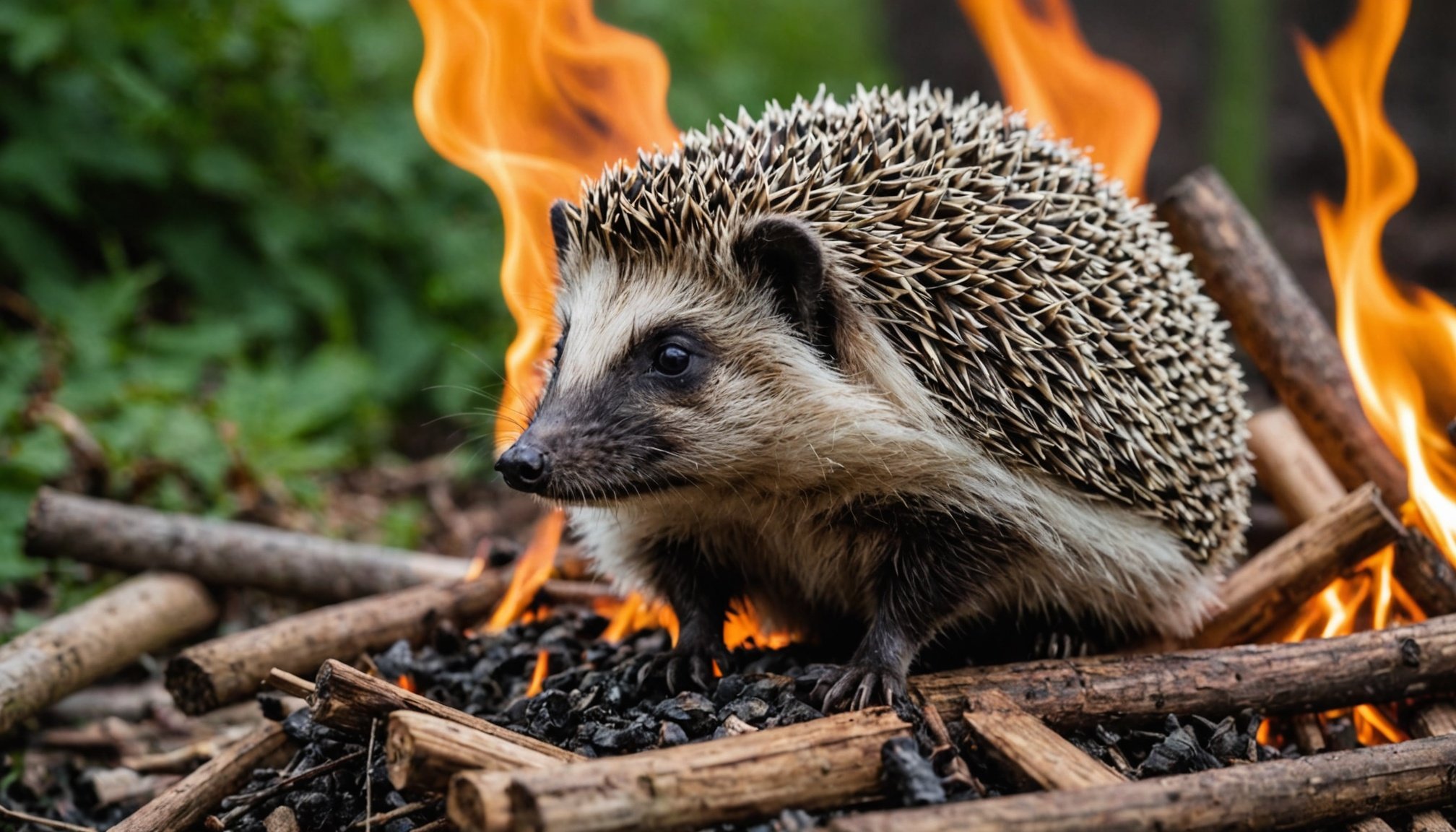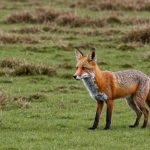Bonfire nights are a delightful way to gather with friends and family, but they can pose a hidden threat to local wildlife, especially hedgehogs. Ensuring these charming creatures can coexist with our outdoor festivities is essential. By following some simple tips, you can enjoy your fire while keeping hedgehogs safe and sound. Let’s explore how to create a hedgehog-safe bonfire and make your gathering a joy for both humans and wildlife.
Understanding Hedgehogs and Their Habitats
Exploring the fascinating world of hedgehogs reveals their unique habitats and behaviors. These small mammals are found across Europe, Asia, and Africa, thriving in diverse environments from forests to suburban gardens. Their adaptability showcases their resilience, yet they still face challenges in the wild.
Dans le meme genre : Designing a Pet-Friendly Garden in the UK That Nourishes Local Wildlife
Hedgehog Habitats
Hedgehogs prefer environments with ample cover, such as hedgerows and woodlands. They often make nests in dense vegetation or under logs. This need for cover highlights the importance of wildlife protection efforts, especially in urban areas where natural habitats are diminishing.
Typical Hedgehog Behaviors
Hedgehogs are nocturnal creatures, known for their solitary nature. They engage in various activities, such as foraging for insects and small animals. Their behavior includes a unique defense mechanism—rolling into a ball to protect themselves from predators. Understanding these animal behaviors can help us coexist peacefully with them.
Avez-vous vu cela : Automation in hatcheries: innovation and connectivity for continuous Improvement
Protecting Hedgehogs
To support hedgehog habitats, consider these actions:
- Avoid using pesticides in gardens.
- Create a hedgehog-friendly garden with log piles and leaves.
- Be cautious with bonfires, checking for hedgehogs before lighting.
Protecting these creatures during outdoor activities ensures their survival and enriches our ecosystems.
Selecting a Safe Bonfire Location
Choosing a bonfire site with minimal wildlife disruption is crucial for protecting hedgehogs and other creatures.
Criteria for Site Selection
To ensure a wildlife-friendly bonfire, consider these criteria:
- Distance from hedgehog burrows: Verify the absence of nests and burrows nearby to prevent harm.
- Vegetation cover: Select open areas devoid of dense vegetation, as these are potential hedgehog habitats.
- Proximity to natural shelters: Avoid locations near logs or piles of leaves, which hedgehogs use for nesting.
Areas to Avoid
Certain areas pose higher risks to hedgehog habitats. Avoid building bonfires in:
- Dense hedgerows: These are prime nesting spots for hedgehogs.
- Woodland edges: These locations often serve as pathways for wildlife.
- Garden corners: These areas may harbor hidden hedgehog burrows.
Importance of Distance
Maintaining a safe distance from hedgehog burrows is essential. This practice minimizes the risk of disturbing or injuring hedgehogs. By carefully selecting a bonfire site, you contribute to the conservation of these charming creatures and promote a wildlife-friendly location.
These considerations help ensure that your outdoor activities are both enjoyable and environmentally responsible.
Fire Management Strategies
Ensuring bonfire safety is essential to protect both people and wildlife. Proper fire management techniques help minimize the impact on wildlife, such as hedgehogs, while also maintaining safety.
Building a Safe Bonfire
To build a safe bonfire, start by selecting a flat, open area away from vegetation. Use dry wood, stacking it loosely to ensure good airflow. This method reduces smoke and allows for better control of the flames. Always keep a bucket of water or a fire extinguisher nearby for emergencies.
Monitoring the Fire
Constant vigilance is key to wildlife safety. Regularly check the surroundings for any signs of wildlife, and ensure the fire remains contained. Keep the fire small and manageable, avoiding excessive flames that could endanger nearby habitats.
Extinguishing the Fire Properly
Proper extinguishing techniques are crucial to prevent harm. Douse the fire with water, stirring the ashes until they are cool to the touch. This ensures no embers remain that could reignite.
- Fire Management Tips:
- Build in open spaces
- Keep fire small
- Extinguish thoroughly
By following these fire management strategies, you contribute to bonfire safety and wildlife safety, ensuring a responsible and enjoyable outdoor experience.
Choosing Wildlife-Safe Materials
Ensuring the safety of hedgehogs and other wildlife starts with selecting the right materials.
Recommended Materials for a Hedgehog-Safe Bonfire
When planning a bonfire, opting for safe bonfire materials is crucial for wildlife conservation. Natural, untreated wood is an excellent choice. It burns cleanly and doesn’t release harmful chemicals. Similarly, using dried leaves and twigs can create a warm, inviting fire without endangering wildlife.
Dangers of Using Certain Chemicals and Treated Woods
Certain materials pose significant risks. Chemically treated woods, such as those used in construction, can release toxic fumes when burned. These fumes are harmful to both humans and animals. Avoid using painted or varnished wood, as they contain chemicals that can be detrimental to the environment.
Eco-Friendly Alternatives for Bonfire Fuel
For an eco-friendly burning experience, consider using compressed paper bricks or natural fiber logs. These alternatives are not only sustainable but also ensure minimal impact on surrounding wildlife. They burn efficiently and produce less smoke, making them ideal for a wildlife-safe bonfire.
- Safe Materials: Untreated wood, dried leaves, twigs
- Avoid: Chemically treated wood, painted wood
- Eco-Friendly Alternatives: Compressed paper bricks, natural fiber logs
By choosing the right materials, you support wildlife conservation while enjoying your outdoor activities responsibly.
Legal Considerations for Bonfires
Understanding the legal landscape is crucial for responsible bonfire activities.
Overview of Local Regulations
Local bonfire regulations are designed to protect both the environment and wildlife. These rules often specify when and where bonfires can be lit. Adhering to these guidelines is essential to avoid penalties. For instance, some areas require a permit to ensure compliance with wildlife laws.
Legal Implications of Disturbing Habitats
Disturbing hedgehog habitats can lead to significant legal consequences. Wildlife protection laws are in place to safeguard these creatures. Violating these laws by harming or displacing hedgehogs during bonfire activities can result in fines or legal action. Awareness and compliance with these legal requirements are vital.
Importance of Permits and Guidelines
Obtaining necessary permits is not just a legal formality but a commitment to wildlife protection. Permits often come with specific conditions to minimize environmental impact. Following these guidelines ensures that your bonfire is both legal and environmentally responsible.
- Legal Requirements:
- Check local bonfire regulations
- Obtain necessary permits
- Adhere to wildlife protection laws
By understanding and following these legal considerations, you contribute to the conservation of hedgehogs and their habitats while enjoying your outdoor activities responsibly.
Enhancing Bonfire Experiences with Wildlife Safety in Mind
Creating memorable bonfire activities while ensuring wildlife-friendly entertainment.
Wildlife-Safe Activities
Incorporating wildlife-friendly entertainment into your bonfire nights can be both fun and educational. Consider activities like storytelling focused on local wildlife, or hosting a nature-themed quiz. These activities not only entertain but also raise awareness about wildlife protection.
Observing Wildlife
Turn your bonfire night into an opportunity for wildlife observation. Use binoculars to spot nocturnal creatures like owls or bats. Encourage friends and family to quietly watch for hedgehogs or other animals. This can enhance your recreational tips by promoting a deeper connection with nature.
Raising Awareness
Promote wildlife protection by discussing its importance during your bonfire gatherings. Share facts about local species and their habitats. Use this platform to encourage others to adopt wildlife-friendly practices.
- Wildlife-Safe Activities:
- Nature storytelling
- Wildlife quizzes
- Observational sessions
By integrating these bonfire activities, you create a more meaningful experience, fostering a sense of stewardship and responsibility towards local ecosystems. This approach ensures that your gatherings remain enjoyable while being considerate of the natural world.
Signs of Hedgehog Activity Near Your Bonfire
Understanding the presence of hedgehogs can ensure a safe bonfire experience.
Identifying Hedgehog Presence
Spotting hedgehog tracks around your bonfire site can be an exciting discovery. Look for small, round footprints or droppings, which are clear signs of hedgehog activity. These creatures often leave behind trails in the soil or grass, especially near wildlife observation areas. At night, listen for rustling sounds in the underbrush, indicating their presence.
What to Do If Hedgehogs Are Spotted
If you notice hedgehog activity near your bonfire, it’s crucial to act responsibly. Consider relocating your bonfire to a safer spot. Ensure that the hedgehogs have a clear path to retreat without disturbance. It's essential to respect their natural behaviors and minimize stress during your wildlife observation.
Respecting Wildlife and Natural Behaviors
Respecting hedgehog activity involves maintaining a respectful distance. Avoid making loud noises or sudden movements that could startle them. Remember, these creatures are an integral part of the ecosystem. Observing them from afar allows you to enjoy the beauty of nature while ensuring their safety.
- Signs of Activity:
- Footprints
- Droppings
- Rustling noises
By recognizing and respecting these signs, you contribute to a harmonious coexistence with local wildlife.
Alternative Ways to Enjoy Outdoor Fires
Exploring wildlife-friendly options for outdoor gatherings.
Fire-Free Outdoor Gatherings
When considering alternative fire experiences, there are several engaging activities that can replace traditional bonfires. Host an evening picnic under the stars, using lanterns or solar-powered lights to create a cozy atmosphere. This approach not only reduces the risk to wildlife but also offers a unique setting for socializing and relaxation.
Safe Outdoor Heating Alternatives
For those seeking warmth, consider wildlife-friendly heating options. Portable propane heaters or electric patio warmers provide efficient heat without the need for an open flame. These alternatives ensure safety for both humans and local wildlife, making outdoor activities more responsible.
Promoting Wildlife-Friendly Recreational Activities
Encouraging wildlife-friendly recreational activities can enhance your outdoor experience. Organize a nature walk, focusing on local flora and fauna, or set up a stargazing session with telescopes. These activities promote awareness and appreciation of the natural world, aligning with wildlife-friendly values.
- Fire-Free Alternatives:
- Evening picnics
- Lantern-lit gatherings
- Stargazing sessions
By opting for these alternative fire experiences, you contribute to a more sustainable and wildlife-friendly environment. These options not only ensure safety but also enrich your connection with nature.














